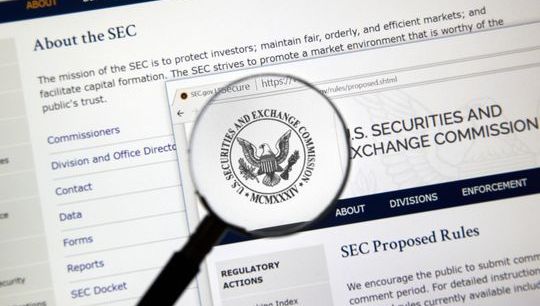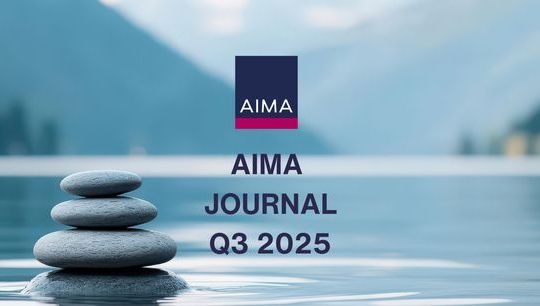Your surveillance data is more valuable than you think
By Marc Salter; Matthew Oswald, ACA Group
Published: 24 November 2025
Surveillance data is no longer solely a compliance tool; it’s a strategic asset that can power smarter trading decisions and strengthen your firm’s ability to manage market abuse risk.
As trading environments grow more complex and regulatory expectations rise, firms must extract greater value from the data they already collect. Useful surveillance data can include trade and transaction data from the full trade lifecycle, meeting and call transcripts, and electronic communications. When used effectively, this data can uncover trends, inform investment decisions, reduce duplication, and reveal hidden risks.
Regulatory pressure
Regulators across major financial jurisdictions, including the UK Financial Conduct Authority (FCA), U.S. Securities and Exchange Commission (SEC), Monetary Authority of Singapore (MAS), Hong Kong Securities and Futures Commission (SFC), Securities and Exchange Board of India (SEBI), and United Arab Emirates regulators such as the Financial Services Regulatory Authority (FSRA) and Dubai Financial Services Authority (DFSA), are tightening expectations around transaction reporting and surveillance, with many of them publishing their commitment to reduce market manipulation in their annual examination priorities and business plans.
Recent fines highlight the cost of poor data quality and fragmented controls:
- A £21 million fine issued to a UK-based digital bank for failures in systems and controls, underscoring the FCA’s focus on operational resilience and governance.
- A £9.2 million penalty against a major commodities exchange for breaches related to market transparency and conduct under MiFID regulations.
- Enforcement action against a CFD trading firm for transaction reporting failures, reinforcing the importance of accurate and timely reporting under Markets in Financial Instruments Regulation (MiFIR).
- A recent US$560 million market manipulation case in India penalised a global firm for aggressive trading strategies, reinforcing the global need for proactive surveillance and governance.
Missed opportunities
In addition to the risk of enforcement, firms are missing a bigger opportunity to use surveillance data to create front-office value.
These shifts reflect a global trend toward more assertive, data-driven supervision.
Regulators are no longer satisfied with static compliance programmes; they expect surveillance to be proactive, integrated, and continuously evolving.
From pre-trade intent to post-trade execution, surveillance data provides insight into trading behaviours, control effectiveness, and operational efficiency.
For the front office, it can also inform research, uncover trading patterns, and support alpha-generating strategies. When used effectively, surveillance becomes a source of competitive advantage, not just a compliance obligation.
For example, transaction cost analysis reporting can do more than provide insights not only to benchmark execution quality and manage trading costs across jurisdictions. It can be used to evaluate both explicit (commissions) and implicit (slippage and market impact) costs globally while supporting compliance with key regulatory standards such as MiFID II (UK and European Union), SEC Rule 606 (US), and the Packaged Retail and Insurance-Based Investment Products (PRIIPs) regulation.
A recent analysis of transaction cost analysis reporting revealed:
- United States: Average commission rates are relatively low due to high competition among brokers and widespread use of algorithmic trading. Commission rates for low-touch and execution-only trading continue to hover at 1.7 cents per share. High-touch & commission-sharing-agreement commission rates are slightly higher at 3.4 cents per share on average.
- European Union: Under MiFID II, transparency requirements have led to more standardised commission structures, averaging 2 to 7 basis points depending on asset class and venue.
- United Kingdom: Post-Brexit, UK firms still align with MiFID II benchmarks, with commission rates like those in the EU.
- Asia-Pacific (Japan, Hong Kong, Singapore): Commission rates vary widely, from 3 basis points to 10 basis points, influenced by local regulations and market structure.
- Emerging Markets (Brazil, South Africa, India): Higher commission rates are common, often exceeding 10 basis points, due to lower liquidity and fewer execution venues.
Unlocking the strategic power of surveillance data
Surveillance data is a firm-wide asset. When shared across departments, it fosters collaboration between compliance, risk, operations, and the front office. It helps identify inefficiencies, reinforce conduct standards, and support strategic decision-making. By breaking down silos, firms can turn surveillance into a unifying force that drives both regulatory readiness and commercial performance.
Yet many firms still treat surveillance as a compliance tool, disconnected from broader business strategy. This siloed approach limits visibility and leaves firms exposed to market abuse risks that span asset classes, trading strategies, and internal processes.
Firms must take a lifecycle-wide approach
To stay ahead, firms should adopt a structured, lifecycle-wide approach to market abuse risk by:
- Evaluating how people, processes, and technology interact across the trade lifecycle.
- Connecting surveillance data to governance, conduct, and control reviews.
- Using insights to inform both compliance and front-office decision-making.
Surveillance data should be continuously updated to reflect evolving trading activity and regulatory expectations.
Conclusion
In the race to obtain alpha, looking internally at your surveillance data can be a game-changer. But unlocking its full potential requires more than just technology, it demands a strategic mindset, cross-functional collaboration, and deep regulatory insight.
Firms that embrace this shift can move from reactive compliance to proactive risk management, using surveillance data to drive smarter decisions, uncover hidden risks, and create front-office value. For those looking to accelerate this transformation, working with experienced specialists can provide the perspective, tools, and frameworks needed to unlock the full value of surveillance data.
By combining data analytics with deep industry insight, firms can move from reactive compliance to proactive risk management and turn surveillance data into a source of lasting strategic advantage.








